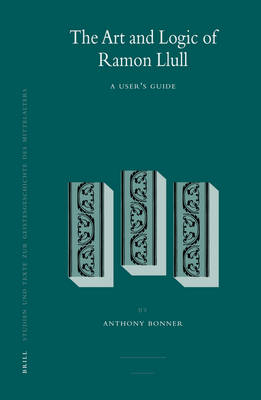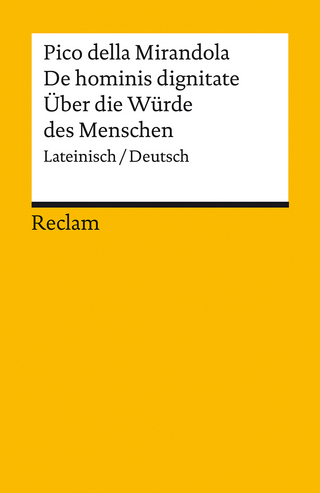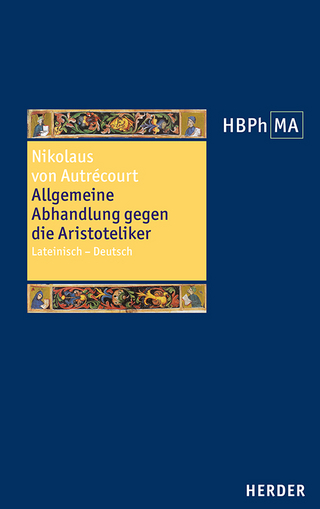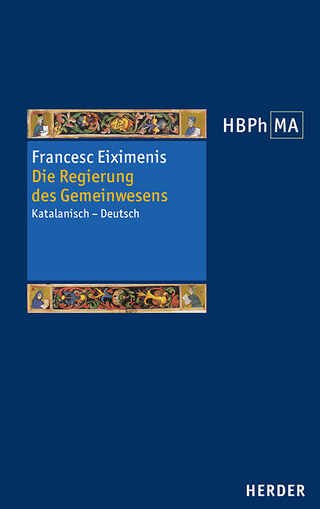
The Art and Logic of Ramon Llull
A User's Guide
Seiten
2007
Brill (Verlag)
978-90-04-16325-6 (ISBN)
Brill (Verlag)
978-90-04-16325-6 (ISBN)
This book attempts to explain the functioning of the combinatorial, semi-mechanical demonstrative techniques of Ramon Llull’s ‘Art’, how it began as an apologetic instrument, how it developed through two main stages, and how it ended trying to reformulate key aspects of medieval Aristotelian logic.
Ramon Llull (ca. 1232–1316), mystic, missionary, philosopher, lay theologian, and one of the founding fathers of Catalan literature, was chiefly known in his own time and in subsequent generations as the inventor of a combinatorial, semi-mechanical method of demonstration, which he called his ‘Art’ and which he had developed to free interreligious debate from its fruitless textual base. Most of the extensive modern literature has been dedicated to mapping the foundations of Llull’s system, with little attempt to see how he used and combined these foundations to produce actual demonstrations. This book, in a series of explications de textes, tries to explain what kind of demonstrative systems he developed during the two main stages of the ‘Art’, how they finally evolved into an adaptation of key aspects of medieval Aristotelian logic, and why the ‘Art’ was central to all Llull’s endeavors.
Ramon Llull (ca. 1232–1316), mystic, missionary, philosopher, lay theologian, and one of the founding fathers of Catalan literature, was chiefly known in his own time and in subsequent generations as the inventor of a combinatorial, semi-mechanical method of demonstration, which he called his ‘Art’ and which he had developed to free interreligious debate from its fruitless textual base. Most of the extensive modern literature has been dedicated to mapping the foundations of Llull’s system, with little attempt to see how he used and combined these foundations to produce actual demonstrations. This book, in a series of explications de textes, tries to explain what kind of demonstrative systems he developed during the two main stages of the ‘Art’, how they finally evolved into an adaptation of key aspects of medieval Aristotelian logic, and why the ‘Art’ was central to all Llull’s endeavors.
Anthony Bonner, editor of the journal Studia Lulliana as well as of the new critical edition of the Catalan works of Ramon Llull, has published extensively on this figure, including Selected Works of Ramon Llull, 2 vols. (Princeton, 1985), and Doctor Illuminatus (Princeton, 1993).
Preface .. ix
Acknowledgments .. xv
Abbreviations .. xvii
1. Introduction .. 1
2. The quaternary phase .. 26
3. Changes in the Art during the quaternary phase, and the transition to the ternary phase .. 93
4. The ternary phase .. 121
5. The post-Art phase: logic .. 188
6. Overview .. 256
Appendices .. 301
The Martin Gardner Problem .. 303
Bibliography .. 307
Index of works cited
Index of names and subjects
| Erscheint lt. Verlag | 27.11.2007 |
|---|---|
| Reihe/Serie | Studien und Texte zur Geistesgeschichte des Mittelalters ; 95 |
| Verlagsort | Leiden |
| Sprache | englisch |
| Maße | 155 x 235 mm |
| Gewicht | 680 g |
| Themenwelt | Geisteswissenschaften ► Philosophie ► Philosophie des Mittelalters |
| ISBN-10 | 90-04-16325-5 / 9004163255 |
| ISBN-13 | 978-90-04-16325-6 / 9789004163256 |
| Zustand | Neuware |
| Haben Sie eine Frage zum Produkt? |
Mehr entdecken
aus dem Bereich
aus dem Bereich
Lateinisch - Deutsch
Buch | Hardcover (2024)
Herder (Verlag)
70,00 €


